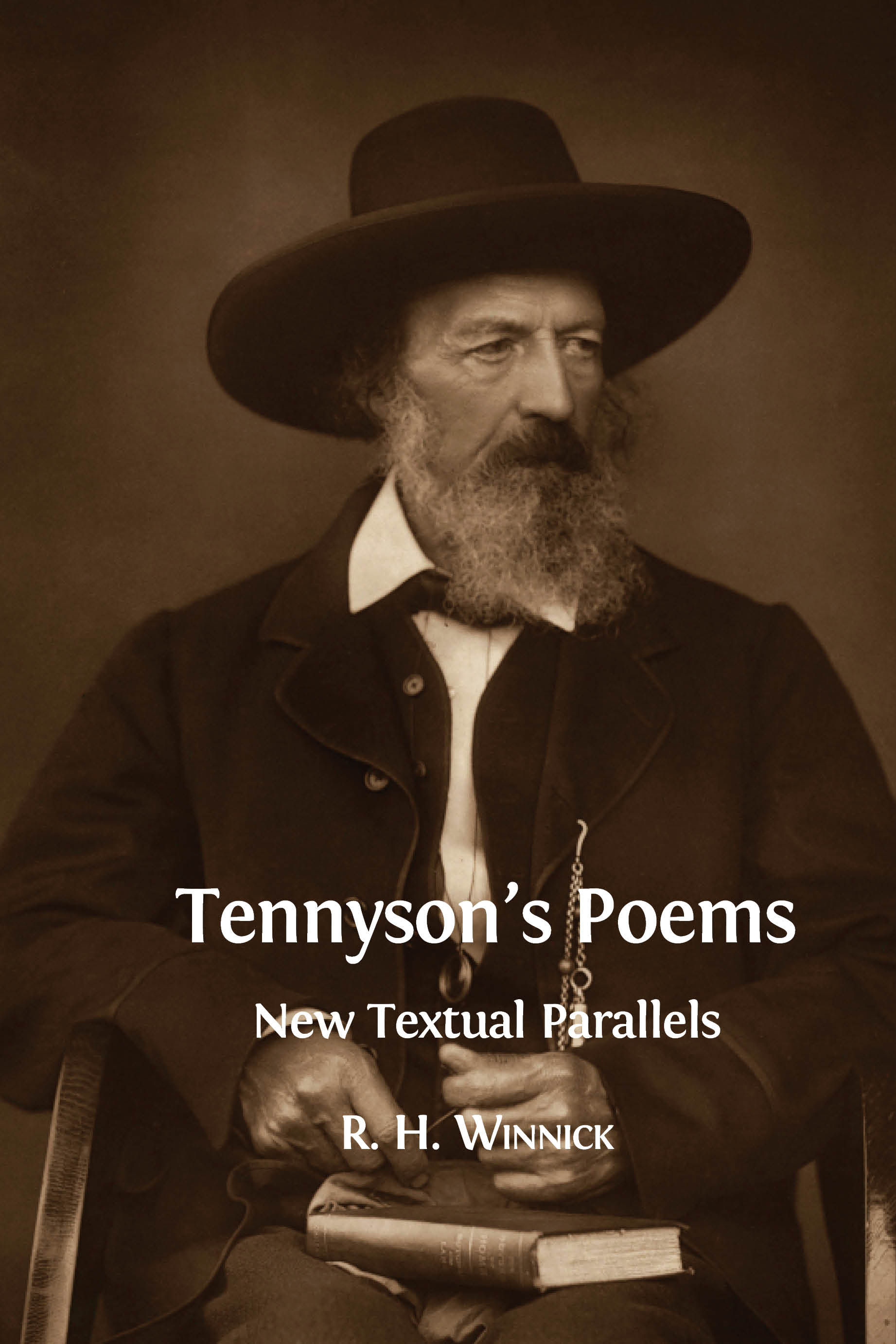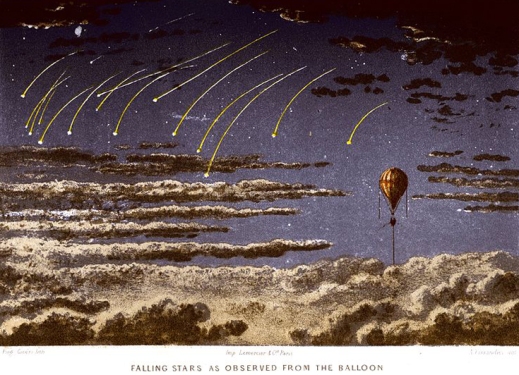by Hamid Pashaei and Heather Morrison
Update May 1, 2019:
Based on an inquiry from Christopher Pym from Springer Nature (owner of BioMedCentral) on the Global Open Access List I (Heather) have re-calculated the observed BMC pricing changes from 2018 – 2019, in GBP rather than USD. BMC reports pricing in 3 currencies (a common practice for large publishers). We use GBP for historical purposes. In brief, this re-analysis confirms our original finding of a sharp increase in APCs. 66% of BMC journals for which we have APC data in GBP for both 2018 and 2019 have increased their APCs; 61% have increased their APCs at far beyond inflationary levels, causing the overall average (including journals that did not change APCs or lowered APCs) to increase by 15%, a rate far beyond inflationary levels. We thank Christopher Pym for his interest in our research.
We have APC data for both 2018 and 2019 for 260 BMC journals. The average APC for these journals was 1,416 GBP in 2018, 1,555 GBP in 2019, an average increase of 139 GBP or an average 9% increase. The pricing changes are more complex, however, as some BMC journals have maintained or lowered their prices. In USD (using XE currency converter May 1, 2019), the average APC for these journals rose from 1,852 USD to 2,034 USD, an increase of 181 USD (note rounding error of $1).
Of the 260 BMC journals for which we have 2018 and 2018 APCs:
- 172 (66%) increased in price
- 55 (21%) maintained the same price
- 33 (13%) decreased in price
Of the journals that increased in price, the range of percentage increase was from under 1% to 55%. 158 journals (61% of all journals) had APC price increases clearly beyond inflationary levels, ranging from 7% – 55%.
Because of this challenge, I have re-downloaded the BMC APC list from https://www.biomedcentral.com/getpublished/article-processing-charges/biomedcentral-prices and checked GBP pricing for several journals, finding no difference from our data gathering date of April 4.
On the basis of this selective re-analysis of 260 BMC journals for which we have price data I conclude that the average APC price increase for BMC journals is 15%, (factoring in journals that did not change APC or lowered APC), a rate far above inflation, and that the majority of BMC journals (61%) increased their APCs. This confirms our original findings of a sharp APC increase for BMC in 2019. Please note that this re-analysis using the same basic dataset but slightly different methods. The re-analysis is limited to journals for which we have data in both 2018 and 2019, and is limited to GBP. When new journals and journals no longer published by BMC are factored in, this changes the averages; there can also be differences in findings based on which currency is selected for analysis.
A list of BMC APCs in GBP in 2018 and 2019 follows, in order by percentage change (highest price increase first).
| Journal Title | 2019 APC (GBP) | 2018 APC (GBP) | 2019-2018 change in GBP (amount) | 2019 – 2018 change in GBP (percentage) |
| Tropical Medicine and Health | 1570 | 705 | 865 | 55% |
| Molecular Cancer | 2490 | 1,470 | 1,020 | 41% |
| Acta Neuropathologica Communications | 1570 | 950 | 620 | 39% |
| Particle and Fibre Toxicology | 2170 | 1,370 | 800 | 37% |
| Molecular Autism | 2170 | 1,370 | 800 | 37% |
| Journal of Experimental & Clinical Cancer Research | 2290 | 1,470 | 820 | 36% |
| Journal of Hematology & Oncology | 2490 | 1,650 | 840 | 34% |
| BMC Pulmonary Medicine | 1990 | 1,370 | 620 | 31% |
| Immunity & Ageing | 1990 | 1,370 | 620 | 31% |
| Journal of Translational Medicine | 1990 | 1,370 | 620 | 31% |
| World Journal of Emergency Surgery | 1990 | 1,370 | 620 | 31% |
| Cardiovascular Diabetology | 2170 | 1,540 | 630 | 29% |
| Journal of Nanobiotechnology | 1870 | 1,370 | 500 | 27% |
| Pediatric Rheumatology | 1870 | 1,370 | 500 | 27% |
| Cell Division | 1990 | 1,470 | 520 | 26% |
| Genome Medicine | 2570 | 1,900 | 670 | 26% |
| BMC Veterinary Research | 1570 | 1,165 | 405 | 26% |
| Annals of Clinical Microbiology and Antimicrobials | 1790 | 1,370 | 420 | 23% |
| Behavioral and Brain Functions | 1790 | 1,370 | 420 | 23% |
| Cardiovascular Ultrasound | 1790 | 1,370 | 420 | 23% |
| Cell Communication and Signaling | 1790 | 1,370 | 420 | 23% |
| Diagnostic Pathology | 1790 | 1,370 | 420 | 23% |
| Genes & Nutrition | 1790 | 1,370 | 420 | 23% |
| Molecular Cytogenetics | 1790 | 1,370 | 420 | 23% |
| Reproductive Health | 1790 | 1,370 | 420 | 23% |
| Theoretical Biology and Medical Modelling | 1790 | 1,370 | 420 | 23% |
| Antimicrobial Resistance and Infection Control | 1790 | 1,370 | 420 | 23% |
| International Journal of Pediatric Endocrinology | 1790 | 1,370 | 420 | 23% |
| Thyroid Research | 1790 | 1,370 | 420 | 23% |
| Clinical Epigenetics | 2040 | 1,565 | 475 | 23% |
| Retrovirology | 1990 | 1,565 | 425 | 21% |
| Journal of Physiological Anthropology | 1270 | 1,000 | 270 | 21% |
| Journal of NeuroEngineering and Rehabilitation | 1790 | 1,430 | 360 | 20% |
| Nutrition & Metabolism | 1790 | 1,430 | 360 | 20% |
| BMC Complementary and Alternative Medicine | 1690 | 1,370 | 320 | 19% |
| BMC Geriatrics | 1690 | 1,370 | 320 | 19% |
| BMC Medical Research Methodology | 1690 | 1,370 | 320 | 19% |
| BMC Musculoskeletal Disorders | 1690 | 1,370 | 320 | 19% |
| BMC Neurology | 1690 | 1,370 | 320 | 19% |
| Child and Adolescent Psychiatry and Mental Health | 1690 | 1,370 | 320 | 19% |
| Clinical Sarcoma Research | 1690 | 1,370 | 320 | 19% |
| Conflict and Health | 1690 | 1,370 | 320 | 19% |
| Fluids and Barriers of the CNS | 1690 | 1,370 | 320 | 19% |
| Globalization and Health | 1690 | 1,370 | 320 | 19% |
| Head & Face Medicine | 1690 | 1,370 | 320 | 19% |
| International Breastfeeding Journal | 1690 | 1,370 | 320 | 19% |
| International Journal of Health Geographics | 1690 | 1,370 | 320 | 19% |
| Microbial Cell Factories | 1690 | 1,370 | 320 | 19% |
| Neural Development | 1690 | 1,370 | 320 | 19% |
| Patient Safety in Surgery | 1690 | 1,370 | 320 | 19% |
| Radiation Oncology | 1690 | 1,370 | 320 | 19% |
| Reproductive Biology and Endocrinology | 1690 | 1,370 | 320 | 19% |
| Substance Abuse Treatment, Prevention, and Policy | 1690 | 1,370 | 320 | 19% |
| Virology Journal | 1690 | 1,370 | 320 | 19% |
| Hereditary Cancer in Clinical Practice | 1690 | 1,370 | 320 | 19% |
| Journal of Ovarian Research | 1690 | 1,370 | 320 | 19% |
| Breast Cancer Research | 2290 | 1,860 | 430 | 19% |
| Genome Biology | 2380 | 1,950 | 430 | 18% |
| Cancer Cell International | 1790 | 1,470 | 320 | 18% |
| Journal of Inflammation | 1790 | 1,470 | 320 | 18% |
| Journal of Cardiothoracic Surgery | 1690 | 1,390 | 300 | 18% |
| Stem Cell Research & Therapy | 1690 | 1,390 | 300 | 18% |
| BMC Research Notes | 990 | 825 | 165 | 17% |
| Biological Procedures Online | 1870 | 1,565 | 305 | 16% |
| Biotechnology for Biofuels | 1870 | 1,565 | 305 | 16% |
| Human Genomics | 1870 | 1,565 | 305 | 16% |
| Microbiome | 1870 | 1,565 | 305 | 16% |
| International Journal for Equity in Health | 1690 | 1,420 | 270 | 16% |
| Alzheimer’s Research & Therapy | 1650 | 1,390 | 260 | 16% |
| Nutrition Journal | 1790 | 1,510 | 280 | 16% |
| Journal of Occupational Medicine and Toxicology | 1690 | 1,445 | 245 | 14% |
| Gut Pathogens | 1790 | 1,540 | 250 | 14% |
| Orphanet Journal of Rare Diseases | 1790 | 1,540 | 250 | 14% |
| BMC Cancer | 1590 | 1,370 | 220 | 14% |
| BMC Health Services Research | 1590 | 1,370 | 220 | 14% |
| BMC Public Health | 1590 | 1,370 | 220 | 14% |
| BMC Medicine | 2170 | 1,880 | 290 | 13% |
| AIDS Research and Therapy | 1690 | 1,470 | 220 | 13% |
| Biomarker Research | 1690 | 1,470 | 220 | 13% |
| Archives of Public Health | 1570 | 1,370 | 200 | 13% |
| Basic and Clinical Andrology | 1570 | 1,370 | 200 | 13% |
| BMC Anesthesiology | 1570 | 1,370 | 200 | 13% |
| BMC Biotechnology | 1570 | 1,370 | 200 | 13% |
| BMC Cardiovascular Disorders | 1570 | 1,370 | 200 | 13% |
| BMC Evolutionary Biology | 1570 | 1,370 | 200 | 13% |
| BMC Gastroenterology | 1570 | 1,370 | 200 | 13% |
| BMC International Health and Human Rights | 1570 | 1,370 | 200 | 13% |
| BMC Medical Genetics | 1570 | 1,370 | 200 | 13% |
| BMC Medical Imaging | 1570 | 1,370 | 200 | 13% |
| BMC Medical Informatics and Decision Making | 1570 | 1,370 | 200 | 13% |
| BMC Microbiology | 1570 | 1,370 | 200 | 13% |
| BMC Palliative Care | 1570 | 1,370 | 200 | 13% |
| BMC Pediatrics | 1570 | 1,370 | 200 | 13% |
| BMC Pharmacology and Toxicology | 1570 | 1,370 | 200 | 13% |
| BMC Psychiatry | 1570 | 1,370 | 200 | 13% |
| BMC Sports Science, Medicine and Rehabilitation | 1570 | 1,370 | 200 | 13% |
| BMC Surgery | 1570 | 1,370 | 200 | 13% |
| BMC Systems Biology | 1570 | 1,370 | 200 | 13% |
| Cardio-Oncology | 1570 | 1,370 | 200 | 13% |
| Clinical Proteomics | 1570 | 1,370 | 200 | 13% |
| Cost Effectiveness and Resource Allocation | 1570 | 1,370 | 200 | 13% |
| Health and Quality of Life Outcomes | 1570 | 1,370 | 200 | 13% |
| Infectious Diseases of Poverty | 1570 | 1,370 | 200 | 13% |
| International Journal of Mental Health Systems | 1570 | 1,370 | 200 | 13% |
| Population Health Metrics | 1570 | 1,370 | 200 | 13% |
| Thrombosis Journal | 1570 | 1,370 | 200 | 13% |
| Epigenetics & Chromatin | 1790 | 1,565 | 225 | 13% |
| Harm Reduction Journal | 1790 | 1,565 | 225 | 13% |
| Journal of Neuroinflammation | 1790 | 1,565 | 225 | 13% |
| Biology of Sex Differences | 1790 | 1,565 | 225 | 13% |
| Molecular Medicine | 1790 | 1,565 | 225 | 13% |
| Critical Care | 1990 | 1,750 | 240 | 12% |
| Experimental Hematology & Oncology | 1690 | 1,495 | 195 | 12% |
| Molecular Brain | 1570 | 1,395 | 175 | 11% |
| Implementation Science | 1690 | 1,510 | 180 | 11% |
| Respiratory Research | 1790 | 1,615 | 175 | 10% |
| Journal of Biological Engineering | 1570 | 1,430 | 140 | 9% |
| Journal of Pharmaceutical Policy and Practice | 1570 | 1,430 | 140 | 9% |
| Journal for ImmunoTherapy of Cancer | 1690 | 1,540 | 150 | 9% |
| BMC Infectious Diseases | 1490 | 1,370 | 120 | 8% |
| Trials | 1490 | 1,370 | 120 | 8% |
| Annals of Occupational and Environmental Medicine | 1370 | 1,265 | 105 | 8% |
| Asthma Research and Practice | 1480 | 1,370 | 110 | 7% |
| BioData Mining | 1480 | 1,370 | 110 | 7% |
| BMC Biochemistry | 1480 | 1,370 | 110 | 7% |
| BMC Bioinformatics | 1480 | 1,370 | 110 | 7% |
| BMC Clinical Pathology | 1480 | 1,370 | 110 | 7% |
| BMC Ear, Nose and Throat Disorders | 1480 | 1,370 | 110 | 7% |
| BMC Ecology | 1480 | 1,370 | 110 | 7% |
| BMC Hematology | 1480 | 1,370 | 110 | 7% |
| BMC Nephrology | 1480 | 1,370 | 110 | 7% |
| BMC Nursing | 1480 | 1,370 | 110 | 7% |
| BMC Ophthalmology | 1480 | 1,370 | 110 | 7% |
| BMC Oral Health | 1480 | 1,370 | 110 | 7% |
| BMC Physiology | 1480 | 1,370 | 110 | 7% |
| BMC Pregnancy and Childbirth | 1480 | 1,370 | 110 | 7% |
| BMC Structural Biology | 1480 | 1,370 | 110 | 7% |
| BMC Urology | 1480 | 1,370 | 110 | 7% |
| Cancers of the Head & Neck | 1480 | 1,370 | 110 | 7% |
| Clinical and Molecular Allergy | 1480 | 1,370 | 110 | 7% |
| Clinical Diabetes and Endocrinology | 1480 | 1,370 | 110 | 7% |
| Contraception and Reproductive Medicine | 1480 | 1,370 | 110 | 7% |
| Disaster and Military Medicine | 1480 | 1,370 | 110 | 7% |
| Fertility Research and Practice | 1480 | 1,370 | 110 | 7% |
| Journal of Clinical Movement Disorders | 1480 | 1,370 | 110 | 7% |
| Lipids in Health and Disease | 1480 | 1,370 | 110 | 7% |
| Maternal Health, Neonatology and Perinatology | 1480 | 1,370 | 110 | 7% |
| Movement Ecology | 1480 | 1,370 | 110 | 7% |
| Proteome Science | 1480 | 1,370 | 110 | 7% |
| Translational Medicine Communications | 1480 | 1,370 | 110 | 7% |
| Tropical Diseases, Travel Medicine and Vaccines | 1480 | 1,370 | 110 | 7% |
| Women’s Midlife Health | 1480 | 1,370 | 110 | 7% |
| Addiction Science and Clinical Practice | 1480 | 1,370 | 110 | 7% |
| Annals of General Psychiatry | 1690 | 1,565 | 125 | 7% |
| Cancer & Metabolism | 1690 | 1,565 | 125 | 7% |
| Journal of Ethnobiology and Ethnomedicine | 1690 | 1,565 | 125 | 7% |
| Journal of Neurodevelopmental Disorders | 1690 | 1,565 | 125 | 7% |
| Arthritis Research & Therapy | 1870 | 1,750 | 120 | 6% |
| Veterinary Research | 1175 | 1,150 | 25 | 2% |
| BMC Biophysics | 1390 | 1,370 | 20 | 1% |
| BMC Genetics | 1390 | 1,370 | 20 | 1% |
| Cerebellum & Ataxias | 1390 | 1,370 | 20 | 1% |
| Fungal Biology and Biotechnology | 1390 | 1,370 | 20 | 1% |
| Multiple Sclerosis and Demyelinating Disorders | 1390 | 1,370 | 20 | 1% |
| pneumonia | 1390 | 1,370 | 20 | 1% |
| Research Integrity and Peer Review | 1390 | 1,370 | 20 | 1% |
| Sleep Science and Practice | 1390 | 1,370 | 20 | 1% |
| Irish Veterinary Journal | 1390 | 1,370 | 20 | 1% |
| Cellular & Molecular Biology Letters | 1390 | 1,420 | -30 | -2% |
| World Journal of Surgical Oncology | 1570 | 1,650 | -80 | -5% |
| Research Involvement and Engagement | 1480 | 1,565 | -85 | -6% |
| Bioelectronic Medicine | 1480 | 1,565 | -85 | -6% |
| Big Data Analytics | 1290 | 1,370 | -80 | -6% |
| Hereditas | 1290 | 1,370 | -80 | -6% |
| Marine Biodiversity Records | 1290 | 1,370 | -80 | -6% |
| Porcine Health Management | 1290 | 1,370 | -80 | -6% |
| Source Code for Biology and Medicine | 1290 | 1,370 | -80 | -6% |
| Journal of Biomedical Semantics | 1290 | 1,370 | -80 | -6% |
| Journal of Biological Research-Thessaloniki | 1390 | 1,510 | -120 | -9% |
| Pilot and Feasibility Studies | 1390 | 1,565 | -175 | -13% |
| Systematic Reviews | 1390 | 1,565 | -175 | -13% |
| Environmental Evidence | 1290 | 1,470 | -180 | -14% |
| BMC Dermatology | 1180 | 1,370 | -190 | -16% |
| BMC Emergency Medicine | 1180 | 1,370 | -190 | -16% |
| Journal of Congenital Cardiology | 1180 | 1,370 | -190 | -16% |
| Diagnostic and Prognostic Research | 1480 | 1,745 | -265 | -18% |
| EvoDevo | 1690 | 1,995 | -305 | -18% |
| Agriculture & Food Security | 1290 | 1,565 | -275 | -21% |
| Cilia | 1290 | 1,565 | -275 | -21% |
| Diabetology & Metabolic Syndrome | 1420 | 1,810 | -390 | -27% |
| Sustainable Earth | 690 | 900 | -210 | -30% |
| Animal Biotelemetry | 1180 | 1,565 | -385 | -33% |
| European Journal of Medical Research | 1480 | 1,995 | -515 | -35% |
| BMC Medical Ethics | 990 | 1,370 | -380 | -38% |
| BMC Nutrition | 990 | 1,370 | -380 | -38% |
| BMC Obesity | 990 | 1,370 | -380 | -38% |
| Philosophy, Ethics, and Humanities in Medicine | 990 | 1,370 | -380 | -38% |
| BMC Psychology | 860 | 1,370 | -510 | -59% |
| Canine Genetics and Epidemiology | 860 | 1,370 | -510 | -59% |
| Journal of Eating Disorders | 860 | 1,370 | -510 | -59% |
| BMC Zoology | 790 | 1,370 | -580 | -73% |
| Acta Veterinaria Scandinavica | 1510 | 1,510 | 0 | |
| Advances in Simulation | 1565 | 1,565 | 0 | |
| Allergy, Asthma & Clinical Immunology | 1370 | 1,370 | 0 | |
| Biological Research | 1430 | 1,430 | 0 | |
| Biology Direct | 1370 | 1,370 | 0 | |
| Biomaterials Research | 1370 | 1,370 | 0 | |
| BioPsychoSocial Medicine | 1370 | 1,370 | 0 | |
| BMC Biology | 1780 | 1,780 | 0 | |
| BMC Developmental Biology | 1370 | 1,370 | 0 | |
| BMC Endocrine Disorders | 1370 | 1,370 | 0 | |
| BMC Family Practice | 1370 | 1,370 | 0 | |
| BMC Genomics | 1370 | 1,370 | 0 | |
| BMC Immunology | 1370 | 1,370 | 0 | |
| BMC Medical Education | 1370 | 1,370 | 0 | |
| BMC Medical Genomics | 1370 | 1,370 | 0 | |
| BMC Molecular Biology | 1370 | 1,370 | 0 | |
| BMC Neuroscience | 1370 | 1,370 | 0 | |
| BMC Plant Biology | 1370 | 1,370 | 0 | |
| BMC Women’s Health | 1370 | 1,370 | 0 | |
| Borderline Personality Disorder and Emotion Dysregulation | 1370 | 1,370 | 0 | |
| Cell & Bioscience | 1370 | 1,370 | 0 | |
| Chinese Medicine | 1370 | 1,370 | 0 | |
| Clinical and Translational Allergy | 1470 | 1,470 | 0 | |
| Emerging Themes in Epidemiology | 1370 | 1,370 | 0 | |
| Environmental Health | 1420 | 1,420 | 0 | |
| European Review of Aging and Physical Activity | 1370 | 1,370 | 0 | |
| Fisheries and Aquatic Sciences | 1370 | 1,370 | 0 | |
| Frontiers in Zoology | 1510 | 1,510 | 0 | |
| Genetics Selection Evolution | 1175 | 1,175 | 0 | |
| Gynecologic Oncology Research and Practice | 1370 | 1,370 | 0 | |
| Health Research Policy and Systems | 1565 | 1,565 | 0 | |
| Human Resources for Health | 1565 | 1,565 | 0 | |
| Infectious Agents and Cancer | 1370 | 1,370 | 0 | |
| International Journal of Behavioral Nutrition and Physical Activity | 1650 | 1,650 | 0 | |
| Journal of Cardiovascular Magnetic Resonance | 1600 | 1,600 | 0 | |
| Journal of Ecology and Environment | 1370 | 1,370 | 0 | |
| Journal of Foot and Ankle Research | 1370 | 1,370 | 0 | |
| Journal of Health, Population and Nutrition | 1370 | 1,370 | 0 | |
| Journal of Medical Case Reports | 825 | 825 | 0 | |
| Journal of Pharmaceutical Health Care and Sciences | 1420 | 1,420 | 0 | |
| Journal of the International Society of Sports Nutrition | 1370 | 1,370 | 0 | |
| Malaria Journal | 1430 | 1,430 | 0 | |
| Mobile DNA | 1370 | 1,370 | 0 | |
| Molecular Neurodegeneration | 1650 | 1,650 | 0 | |
| Multidisciplinary Respiratory Medicine | 1370 | 1,370 | 0 | |
| Parasites & Vectors | 1370 | 1,370 | 0 | |
| Perioperative Medicine | 1565 | 1,565 | 0 | |
| Plant Methods | 1430 | 1,430 | 0 | |
| Public Health Reviews | 1370 | 1,370 | 0 | |
| Revista Chilena de Historia Natural | 1240 | 1,240 | 0 | |
| Scandinavian Journal of Trauma, Resuscitation and Emergency Medicine | 1485 | 1,485 | 0 | |
| Cancer Imaging | 1370 | 1,370 | 0 | |
| Journal of Otolaryngology : Head and Neck Surgery | 1370 | 1,370 | 0 | |
| The Italian Journal of Pediatrics | 1370 | 1,370 | 0 | |
| Cancer Communications | 1370 | 1,370 | 0 | |
| BioMedical Engineering OnLine | 1375 | 1,370 | 5 | |
| Journal of Orthopaedic Surgery and Research | 1570 | 1,565 | 5 | |
| Skeletal Muscle | 1570 | 1,565 | 5 | |
| Algorithms for Molecular Biology | 1390 | 1,370 | 20 |
Our recent analysis of BioMed Central publishing company journals reveals a sharp increase both in number of open access journals and also article processing fees.
BMC currently publishes 330 open access journals that comparing to 2018 data shows an increase of 11% in number of journals. While 25 journals have no article processing fee for authors to publish their articles, there has been a 57% increase in average article processing charge comparing to the last year, as the average processing fee was $1402 in 2018 and now it is $2200.
Comparing to the last year, 264 journals have increased and 5 journals have decreased in APC (article processing charge). The average APC increase for journals is $917 and the average decrease is $124.
The raw data for BMC in 2019 is provided below:
Similar posts:
Ceased and transferred publications and archiving: best practices and room for improvement
Recent APC price changes for 4 publishers (BMC, Hindawi, PLOS, PeerJ)







 REWIND! . . .If you liked this post, you may also dig:
REWIND! . . .If you liked this post, you may also dig:




















